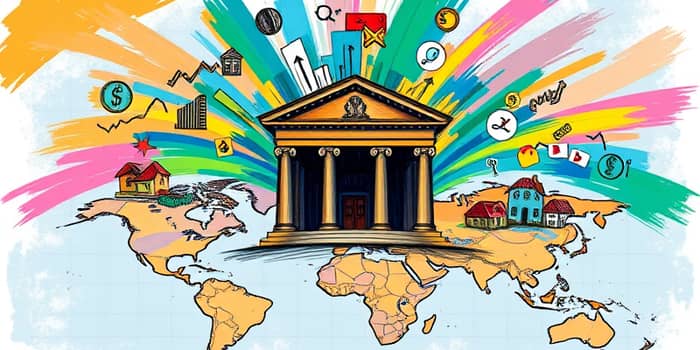
Interest rate adjustments by central banks are more than technical maneuvers: they shape economic realities, influence investment choices, and ripple through communities.
When policymakers raise their benchmark rates, they embark on a path that can cool inflation, but also test the resilience of markets and households worldwide.
At its core, an interest rate hike is a deliberate increase in the cost of borrowing set by the central bank’s policy committee. These shifts leverage benchmark monetary policy rate adjustments to influence economic activity.
By raising rates, authorities are actively combating runaway consumer inflation. Each quarter-point increment transmits through banks, businesses, and individuals, altering incentives and behaviors.
In early 2020, the pandemic prompted a rapid descent to near-zero rates. Yet, as inflation surged to multi-decade highs, the U.S. Federal Reserve and peers launched one of the fastest tightening cycles in 40 years, beginning in 2022.
Mortgage rates mirrored the move, rising from roughly 3% in 2021 to about 6.8% by mid-2025. Markets now price in gradual cuts through 2027, eyeing a 2.25%–2.50% target by year-end.
When central banks tighten, the effects cascade through financial systems via distinct channels:
For instance, Japan’s July 2024 rate increase triggered a sharp unwinding of speculative yen positions, jolting equity markets around the world.
Beyond traders and analysts, rate hikes carry profound implications for everyday activity:
In the housing sector, heightened financial market volatility has driven mortgage applications to multi-year lows, stalling new construction and homebuying—the very engines of growth.
Consumer durable goods spending is forecast to slow by 0.7% in 2025 as higher financing costs and tariffs weigh on budgets. Corporations, facing unprecedented sovereign debt servicing burdens, have scaled back capital projects, mergers, and global expansions.
Meanwhile, the labor market remains a critical barometer. As credit tightens, hiring may slow, compelling the Fed to balance combating inflation with preserving employment.
The U.S. tightening cycle often forces peers into synchronized global monetary tightening to stabilize their own currencies and economies.
These interconnected flows reveal how a single policy pivot can spawn ripple effects across continents.
Investor sentiment often hinges more on expectations than on actual moves. Fed minutes, dot-plot forecasts, and inflation data releases can spark swift reallocations in equity, bond, and FX markets, creating feedback loops of optimism or fear.
Yet gaps in financial literacy and risk awareness leave many participants ill-prepared for sudden market shifts, sometimes exacerbating volatility through reactive trading.
Forward guidance points to rate cuts ahead, but clouds loom large. Tariff-driven price spikes, geopolitical unrest, or wavering fiscal discipline could delay easing or even prompt further hikes.
Scenario analyses warn that a loss of confidence in U.S. fiscal health could send 10-year Treasury yields above 5%, triggering steep corrections across asset classes. In this environment, flexibility and robust risk controls become paramount for investors.
Interest rate hikes mark a watershed moment: the end of a long era of ultra-low borrowing costs and the dawn of a new regime characterized by higher yields and complex policy trade-offs.
By navigating uncertainty with knowledge, investors, businesses, and policymakers can collaborate to mitigate risks and harness opportunities that emerge from this evolving landscape.
Staying informed, diversified, and adaptable will empower stakeholders to not only endure the challenges ahead but also to thrive in a world where monetary policy remains a potent force shaping global financial markets.
References













